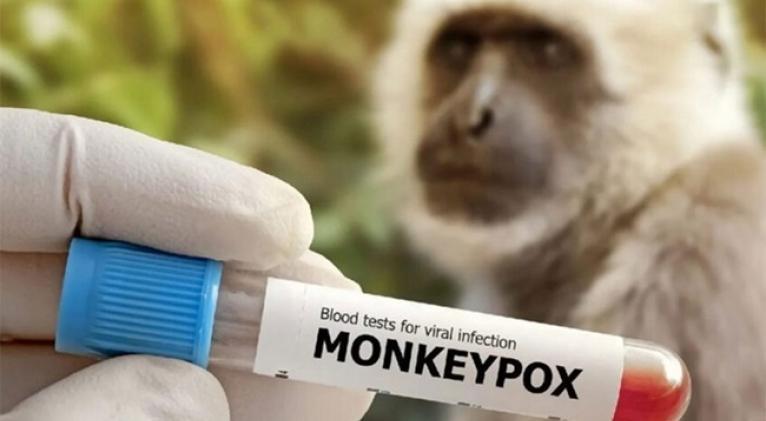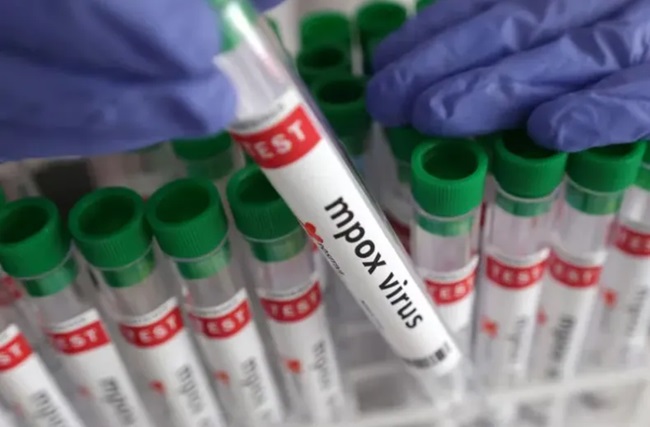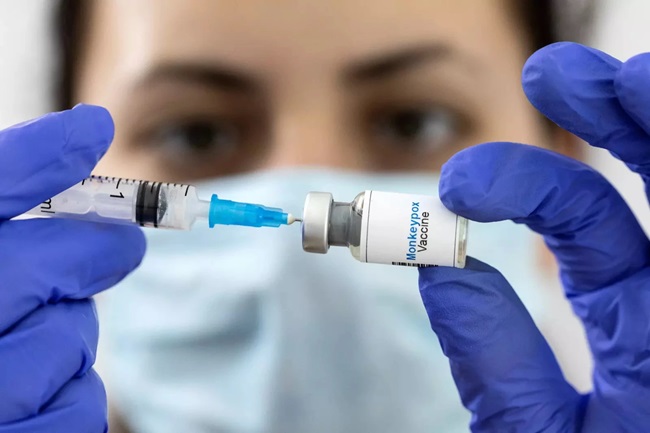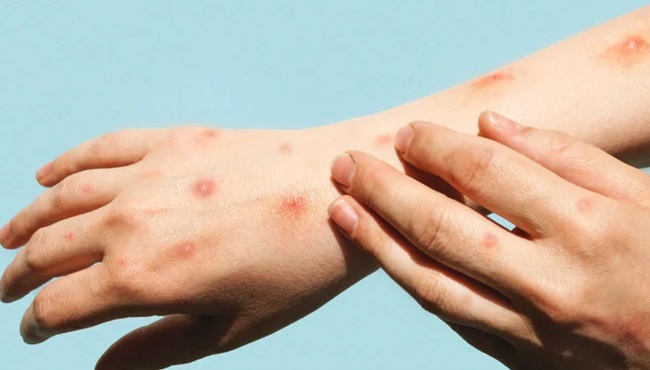Monkeypox: Concern, but No Panic
especiales

A global health emergency has been declared, but it can be controlled and there’s no reason to assume it’s a new pandemic, similar to what Covid-19 was.
This was recently stated by WHO, through its regional director in Europe, Hans Kluge, who in an exchange with the press said that, although there’s a real concern regarding the new variant of the virus also known as mpox, it’s possible to control this virus.
The director pointed out that “We know how to control mpox. In the European region, the necessary measures to completely eliminate its transmission.” He also stressed that "The need for a coordinated response is now greater in the African region" and "we can and must tackle mpox together, in all regions and continents."
Since early August, WHO invited manufacturers of monkeypox vaccines (mpox) to submit dossiers for emergency assessment. A new strain of the virus, which first emerged in September 2023, had been detected outside the Democratic Republic of Congo.

To date, two vaccines against the disease are used, both recommended by WHO Strategic Advisory Group of Experts on Immunization (SAGE).
What is Mpox and how is it spread?
Monkeypox is an infectious disease caused by the monkeypox virus (abbreviated as MPXV). It’s from the Poxviridae family, genus Orthopoxvirus, which also includes the human smallpox, cowpox, and swinepox viruses and others.
MPXV was discovered in 1958 in Denmark in monkeys used in research laboratories. The first case in humans dates back to 1970 in the Democratic Republic of the Congo, where a 9-month-old was the first patient.
The natural reservoir of the virus has not been determined, confirms WHO, but there are some small mammals vulnerable to it, such as squirrels and monkeys.
After the eradication of smallpox in 1980, the monkeypox virus gradually emerged on the African continent. Between 2022-2023, a global outbreak occurred, caused by a strain known as clade IIb.

How is it transmitted?
The disease can be transmitted to humans through physical contact with infected people or animals, and also with contaminated materials.
Transmission from person to person occurs through direct contact with infectious lesions on the skin, mouth or genitals of someone who is already sick. Infection can occur face to face in the case of prolonged close contact, since speaking or inhaling respiratory droplets or short-range aerosols can transmit the virus, and it also happens when kissing or touching the skin or having sexual intercourse.
It’s through these contacts that the virus finds a gateway into the body from a lesion on the skin, mucous membranes (oral, pharyngeal, ocular, genital, anal) or through the respiratory tract. People with multiple sexual partners are at greater risk of infection.
In the case of transmission from animals to humans, this occurs through bites or scratches, or when hunting, handling carcasses, preparing, cooking or eating infected animals. The extent of the presence of the virus among animals is still being investigated.
The third way of infection – from contaminated objects – can be through contact with bedding or clothing, sharp objects already infected with the virus, or in tattoo parlors where adequate measures are not taken, among others.
Anyone can contract monkeypox through contact, and pregnant women can transmit the disease to the fetus.
What are the symptoms?
Usually, symptoms and other evidence begin a week after infection, but they can appear between 1 and 21 days later. They last from 2 to 4 weeks, and can persist longer in people with a weak immune system.
The most common symptoms are skin rashes or lesions on the mucous membranes, accompanied by fever, headache, muscle pain, back pain, and throat pain, as well as lack of energy and swelling of the lymph nodes, which is very characteristic of this disease. There are those who are infected and do not present any symptoms.
Some people with the disease first experience a skin rash, which begins on the face and spreads all over the body, to the palms of the hands and soles of the feet. It starts as a spot and turns into a fluid-filled blister that can itch or hurt.
These lesions can also be found in the mouth and throat, in the groin, genitals and anus, or in other parts of the body. There may be a few or hundreds.
As the rash heals, these lesions dry out and become covered with scabs that eventually fall off. People with the disease can spread the virus until all the lesions have healed and the skin in these areas has renewed itself.
Complications that can result from infection with mpox include abscesses or other worsening of skin lesions, pneumonia, infection of the cornea with loss of vision, pain or difficulty swallowing, vomiting and diarrhea that can lead to severe dehydration or malnutrition, sepsis (blood infection with a generalized inflammatory response of the body), inflammation of the brain (encephalitis), heart (myocarditis), rectum (proctitis), genital organs (balanitis) or urinary tract (urethritis).
Although death is a possibility, children, pregnant women and immunosuppressed people are particularly at risk of complications, as are HIV patients who are not properly treated.
For diagnosis, laboratory tests are conclusive and consist of a PCR (polymerase chain reaction) test on material from skin lesions. These tests are of great importance to avoid misdiagnosing it, confusing it with chickenpox, measles or other skin infections, and thus proceed with rapid treatment and prevent the spread of the virus.
Monkeypox and the world

So far, more than 16,000 cases of mpox infections have been reported in more than 75 countries and cases seem to continue to increase. In fact, the number of reported cases increased by 77% since the end of June to the beginning of July, according to data from the WHO and the UN.
The last time the WHO called for a global health emergency was in 2022, regarding mpox, which then affected almost 100,000 people worldwide.
Since the beginning of 2024, even though Africa and particularly the Congo lead the unfortunate list of infections and deaths, other regions have also been affected.
In the Democratic Republic of the Congo alone, 15,600 cases of monkeypox and 537 deaths have been recorded. This time, the outbreak has spread to 13 African countries, including some that had not previously reported cases such as Kenya, Rwanda or Uganda.
In mid-August, Sweden reported the first case in its territory. It was someone who had visited the African continent.
Today, Spain is the European country with the most cases of monkeypox since 2022, a total of 8,104 cases, but none with the new variant. This year, until August 8, the National Epidemiological Surveillance Network (RENAVE) of that country reports the total of the 264 cases, most of them men with an average age of 37 years and born in that country.
In general, so far, the European Center for Disease Control (ECDC) considers the impact of monkeypox as low risk for the old continent since the possibility of a “sustained transmission” is low because cases are diagnosed quickly.
The new continent shows a different face: so far this year, there have been about 740 cases of monkeypox in the US, more than double the same period last year, according to the Centers for Disease Control and Prevention (CDC).
In the Americas region, from 2022 to July 1, 2024, 62,752 cases of mpox have been recorded in 31 countries and 141 deaths. Half of these cases occurred in the United States. Although the virus has not disappeared from the region, most of the infections correspond to 2022.
In Latin America in particular, Brazil and Colombia are the ones that report the most infections, although there are no deaths or people infected with the new strain of the virus.
In this region, Colombia is followed by Mexico with 4,124 cases and 34 deaths, and Peru with 3,875 cases and 20 deaths.
It’s not as serious as the last pandemic, but the health deficits the region is experiencing, and which became evident during the Covid-19 crisis, remain latent. For example, the diagnosis of mpox infection must be carried out with PCR tests, as was the case with Covid-19, but this possibility is concentrated in Latin America, especially in large cities, although this is not necessarily the case for patients in Cuba, according to information from Granma on August 21, there are no cases of monkeypox.
However, surveillance is kept, according to what Dr. Francisco Durán García, National Director of Epidemiology of the Ministry of Public Health, assured to that newspaper, who recalled that the country has already had experiences in this regard because in 2022 eight cases were detected, which were promptly controlled.

Dr. Durán García recalled on that occasion that the transmission of the disease is through direct or indirect contact with blood, body fluids or skin lesions and in that sense he specified that in the case of sexual relations, the use of condom is not enough to avoid contagion because it’s transmitted body to body.
It will not be the last of the viruses
Maintaining surveillance, cooperating... are imperatives at this time for all countries if we want to keep this virus under control, whose potential for global spread is still worrying, as Tedros Adhanom Ghebreyesus himself, director general of the WHO, stressed.
The mpox will not be the last of the viruses. Many more are expected to emerge because historical trends show a pattern of increasingly frequent and serious spread of zoonotic viruses with dangerous consequences.
Research published by the online journal BMJ Global Health confirms that changes in climate and land use will increase the frequency of zoonotic contagion events, which have been the cause of most modern epidemics.
But it’s a trend that can be changed by concerted global efforts to prevent and contain outbreaks; that is, if selfishness, ambition and the dehumanization of those who could do it the most, those who concentrate millions and wealth, do not prevail.
Translated by Amilkal Labañino / CubaSí Translation Staff














Add new comment